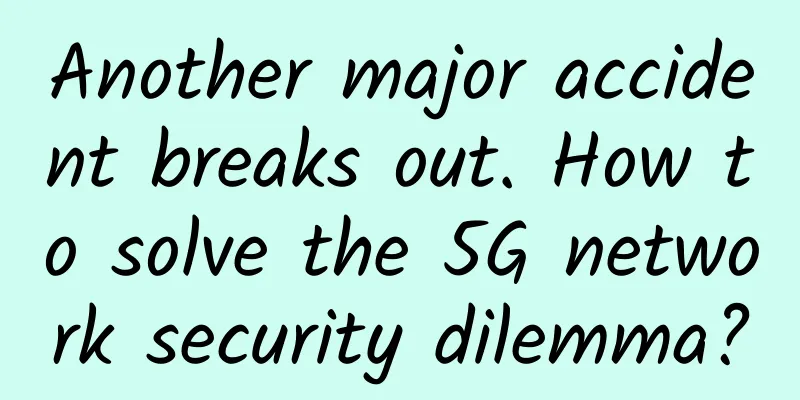5G indoor coverage poses problems for office buildings and operators

|
It’s no secret that 5G cellular is coming, but mobile operators have primarily focused on the consumer market. However, 5G will bring some important developments that will impact enterprise technology buyers. Enterprise customers should start factoring these capabilities into their cellular planning process.
One of the most widely recognized features of 5G is higher data rates. All mobile users will benefit from higher data rates. However, for enterprise managers, other issues and decisions may be more important. In other words, don't be brainwashed by the operators' claims about speed. There is still a lot of work to be done for commercial 5G. For example, Apple has not yet launched a 5G iPhone. Therefore, enterprise users (many of whom are iPhone users) will not join the 5G party anytime soon. The 3rd Generation Partnership Project (3GPP), the body that develops cellular standards such as 5G, also promises ultra-reliable, low-latency communications and support for denser deployments of IoT devices. But those capabilities have yet to materialize. For enterprise users, the big question that hasn’t received enough attention is how to bring 5G indoors. 5G indoor coverage issues Carriers talk about 5G indoor coverage in their ads, but they’re mostly talking about venues like stadiums and shopping malls, which have lots of open space and are under roofs. When enterprises think about 5G indoor coverage, they’re usually thinking about office spaces. Offices have lots of walls and solid walls, which leaves a lot of radio dead spots. Wireless LAN (WLAN) experts are well aware of these dead spots. And, as builders design for energy efficiency, we're seeing specially coated window glass block radio signals, too. Therefore, if users in a building want to talk on their cell phones, a cellular signal source may be required within the building. The huge potential of small cells Traditionally, carriers install distributed antenna systems (DAS) in buildings to improve indoor signal coverage. These systems have a signal source, either through an external donor antenna or a dedicated cellular base station. A network of cables, amplifiers, and antenna heads distributes the cellular signal throughout the building. Typically, the DAS is installed by one carrier, and other carriers pay to access it, which is called a neutral host. However, traditional DAS has big problems with 5G's multiple-input multiple-output transmission technology, which is the key to high transmission rates, so the industry has come up with an idea called small cells. Small cells have a coverage area equivalent to a Wi-Fi access point, with less coverage if there are obstacles. Operators have installed thousands of small cells in outdoor applications to provide denser coverage in high-traffic areas. Now, operators are promoting small cells for indoor applications. For outdoor small cell networks, operators can use the new higher frequency millimeter waves, 24 GHz to 36 GHz. These frequencies are highly linear, meaning they don't turn, and they don't penetrate walls as easily, making them better suited for use in open spaces. For indoor use, you need lower frequency small cells, which are better suited for indoor applications. Cellular Voice Is a Problem Eventually, installing small cells in office buildings will look like an enterprise WLAN. However, we have yet to see a neutral host small cell service that supports multiple carriers. So unless this changes, we may have to deploy a separate small cell network for each carrier we use. Interestingly, this situation mainly creates problems for cellular voice. Your data traffic, on the other hand, may not be affected much. The reason data is not affected is that we have WLAN, and almost all smartphones default to Wi-Fi as the primary choice for sending data traffic. However, the default choice for voice calls is cellular. Tests have shown that about 75% of cellular data traffic is sent over Wi-Fi. So as long as your WLAN is working properly, your data will be covered. In the end, 5G may be an interesting topic for the general public. However, for network professionals, it is a critical responsibility. Enterprise IT departments need to get up to speed on 5G. They should contact mobile operator sales representatives and start planning to support 5G within their facilities. Or you can skip this suggestion, but then I guess you'll need a landline to reach you. |
>>: 5G+4K: This is how you can spend Valentine's Day this year
Recommend
Enterprises need to prioritize mobile unified communications
The need for secure, reliable, and easy-to-use co...
Smart buildings are no longer far away. See how CommScope connects everything with a twisted pair cable!
[51CTO.com original article] On June 5, 2018, the...
Which open source API gateway is better?
[[412862]] Image from Baotu.com Today I will disc...
AlienVPS: $5/month KVM-2GB/50GB/1Gbps unlimited traffic/Los Angeles data center
I searched AlienVPS in the blog and found that it...
Li-Fi, which failed to beat WiFi, may be the savior of 5G
Regarding the technical solutions for future comm...
Liu Liehong: To get rich, we must not only build roads, but also build information highways
[[398027]] 2021-05-08 09:07Focus, broadcast on th...
Fiber Optic Test Equipment Market to Reach $1.78 Billion by 2033
A new report from Future Market Insights (FMI) de...
Tsinghua Unigroup's H3C wins China Mobile's 2020-2022 IPS centralized procurement project with the largest share
Recently, China Mobile announced the bidding resu...
The user's preferred brand! Ruijie WIS leads the cloud management network market
Recently, the "2021 China IT User Satisfacti...
SmartHost: AMD Ryzen series 35% off, starting at $2.57/month, Los Angeles/New Jersey/Las Vegas data centers
SmartHost has posted a message on its website say...
Aruba Launches First-Ever Asset Tracking Solution to Improve Workforce Efficiency and Customer Experience at a Low Cost
The solution uses new Bluetooth Low Energy (BLE) ...
Tudcloud: Hong Kong VPS monthly payment starts from US$7.2, with options for high bandwidth or unlimited traffic
Tudcloud is a newly opened hosting company that p...
Borei Data 2021 strategy release tour opens up innovative paths for IT operations and maintenance
On May 26, 2021, the Beijing stop of the "Se...
Let's talk about IPv4 to IPv6 tunnel
[[273990]] When is IPv6 tunneling used? Connect t...
Ruijie Networks: Not only a light chaser, but also a light maker for Ethernet all-optical networks
With the rapid development of information technol...









